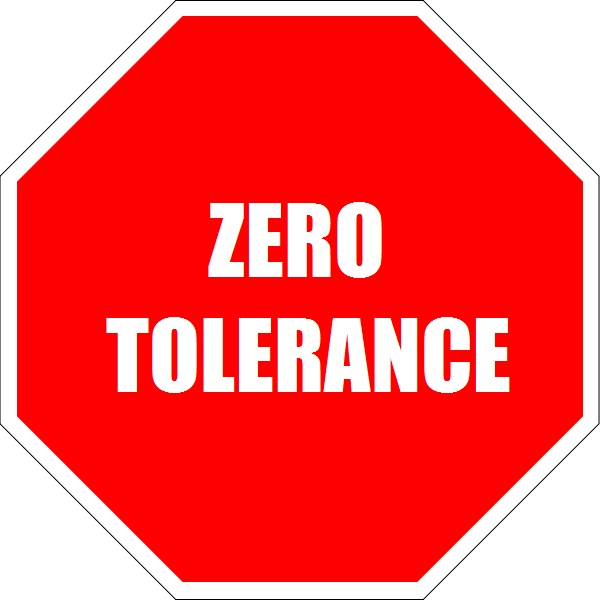Zero Tolerance Is a Harmful School Policy for Teens

Tags: USA
Zero Tolerance Is a Harmful School Policy for Teens published by Evanvinh
Writer Rating: 5.0000
Posted on 2016-03-19
Writer Description: Evanvinh
This writer has written 733 articles.
"Policing and punitive disciplinary approaches to school safety contribute to a school climate that is actually more dangerous, not safer."
In the following viewpoint, Annette Fuentes assesses the widespread failure of zero tolerance policies, especially in California and Texas where rates of suspension for minor infractions have skyrocketed. Fuentes contends that sending students into the legal system for minor offenses does not enhanceschool safety and is counterproductive to the education and well-being of those involved. Fuentes is the author of Lockdown High: When the Schoolhouse Becomes a Jailhouse.
The term "zero tolerance" was first coined during the [Ronald] Reagan presidency and the war on drugs in the 1980s. Congress enacted the Drug-Free Schools and Communities Act in 1986, bringing the war on drugs toschool with rules that mandated zero tolerance for any drugs or alcohol on public school grounds. During the [Bill] Clinton administration, Congress took zero tolerance steps further, passing the 1994 Safe and Gun-Free Schools Act, which mandated a one-year expulsion for students who brought a firearm to school and pumped federal departments of Education and Justice funding into antiviolence programs. Youth, especially African American and Latino males, were considered by criminologists like James Q. Wilson and John Dilulio as superpredators who would fuel an explosive juvenile crime wave in coming decades. A half-dozen high-profileschool shootings in the early 1990s, punctuated by the 1999 Columbine shootings, cemented the idea that young people and the public schools they inhabited were dangerous places indeed.
The Expansion of Zero Tolerance
Fear of school violence grew and has persisted despite the clear downward trend in documented incidents of violent crime in schools. Since 1993, according to reports issued annually by the National Center for Education Statistics, incidents of violence in school have been steadily dropping. It is a downward trend that echoes the same crime drop in the nation as a whole. But fear of crime in schools has trumped reality and common sense in shaping policies at the state and local school board levels. Zero tolerance, once focused on drugs, alcohol, and guns, now targets an ever-expanding range of behaviors.
In districts across the country, the presence of police inside public schools has led to rising rates of arrests of students for minor violations of disciplinary codes or simple youthful hijinks that in another era would have landed a student in the principal's office. The idea of the "teachable moment," turning a student error into a learning opportunity, is less likely in a schoolhouse where handcuff-wielding cops teach the lesson.
"Things a police officer might not arrest someone in a bar fight for, you're seeing them make arrests in schools for. There are a lot of children arrested for disorderly conduct, which has a very subjective definition. Whoever is standing there gets to define it. It could be a student who refuses to sit down in class, or a spitball," said Judith Browne-Dianis, co-director of the Advancement Project, a civil rights advocacy and policy group.
Students' clothing choices and idle doodling have been viewed through the zero tolerance lens as proof of gang membership, meriting suspension. Examples abound of even young children punished for transgressions. A 2005 Yale Child Study Center study found that pre-kindergarten students were being expelled from school at a rate three times that of K-12 students. In the post-Sept. 11 United States, a collective fear of terrorists has also colored disciplinary policies, as school districts around the country have added to codes of conduct rules that prohibit "terroristic threats."
Suspensions Are Skyrocketing
The most immediate and visible consequence of punitive discipline policies are the skyrocketing numbers of suspensions logged by state school agencies over the last decade. California, with its 6.1 million public schoolstudents, recorded 757,000 suspensions of students during the 2009-10 academic year. It was second only to Texas, where 1.6 million suspensions were ordered that same year—and the Lone Star's public schoolpopulation is just 4.7 million.
According to Breaking Schools' Rules, a groundbreaking 2011 study of Texas' public school disciplinary practices, 54 percent of students in the state were suspended or expelled at least once between 7th and 12thgrades. Just 3 percent of all disciplinary actions were for conduct—such as possessing a gun or drugs on campus—that trigger mandatory expulsion or suspension. The other 97 percent were made at the discretion ofschool administrators for violations of codes of conduct. Black and special education students were most likely to be suspended or expelled. And students suspended or expelled for discretionary violations were three times as likely to have a subsequent brush with the juvenile justice system.
The discriminatory aspects of zero tolerance policies are widespread and well documented. Zero tolerancesuspensions are dished out to African American and Latina/o students way out of proportion to their numbers, a disparity Indiana University professor of educational psychology Russell Skiba found goes back 25 years. Skiba and other education researchers suggest that when teachers are inexperienced or come from racial and class backgrounds very different from the students they teach, "cultural discontinuities" can create adversarial dynamics in the classroom. Alienating curriculum, poor classroom management skills, and negative stereotypes of black youth can lead to authoritarian disciplining and overreliance on suspensions....
In the last 20 years, a growing body of literature by academics and mounting caseloads for legal advocates for youth have been documenting the significant harm and ineffectiveness of zero tolerance disciplinary policies for children and youth—especially African Americans and Latina/os. In 2006, the American Psychological Association was impelled by the weight of evidence to take a public stand against zero tolerance. An APA report called punitive discipline harmful to adolescent development and rebutted the idea that school violence is "out of control" and necessitated a zero tolerance approach. In the years since, such evidence has only increased....
The Presence of Police in Schools
Zero tolerance policies have been matched by a police presence in schools that would have been unimaginable a generation ago. For example, in Texas, Augustina Reyes, a professor of education at the University of Houston, began researching suspensions in public schools in 1998. Recently, she said, "zero tolerance has escalated to a new level," as police issue tickets for minor student code violations. Disrupting class, using profanity, acting up on a school bus, truancy, and fighting in a school hallway can lead to a class C misdemeanor ticket and a court appearance for the student and her/his parent, plus court costs of up to $500. In the 2007-08school year, an estimated 275,000 non-traffic class C tickets were issued to juveniles in Texas, she reports....
The Advancement Project investigated policing in several school districts where arrest rates had soared. In 2003 they published Derailed! The Schoolhouse to Jailhouse Track. Browne-Dianis, who authored the report, said: "I got into this because I was working with a Mississippi district where the school policy was that any student involved in a fight—even kids in arguments—had to be sent to youth court, where they could get fined $15 to $500 or probation of six months to a year. I never suspected when I [started looking] at this data that we would be finding children arrested for disorderly conduct or battery on a school board employee."
Policing and punitive disciplinary approaches to school safety contribute to a school climate that is actually more dangerous, not safer. Education professors Matthew Mayer and Peter Leone studied school violence and strategies for creating safer schools back in 1999 and found that schools with more security measures—includingmetal detectors, locked doors, and security guards—paradoxically had a "higher level of disorder." They called it a "cycle of disorder" in which such restrictions and controls actually created a "reciprocal, destructive relationship" with students ... who live in a "heightened state of fear."...
Alternatives to Zero Tolerance Exist
Palm Beach, Fla., was one of the districts featured in the Derailed! study. The district's police department was arresting students at astronomical rates. The county's legal services advocates were grappling with increased caseloads as students overloaded the juvenile justice courts. Barbara Briggs, director of the Educational Advocacy Project for the Legal Aid Society of Palm Beach County, saw policing spike sharply after the Columbine incident: "That started the zero tolerance language. And from zero tolerance for students with weapons, it really morphed to zero tolerance for behavior typical of adolescents."...
At the national level, a 5-year-old coalition of legal, education, and community groups known as the Dignity in Schools Campaign has been pushing for reforms to NCLB [No Child Left Behind] that would replace zero tolerance with alternatives and de-emphasize high-stakes testing. Last spring the coalition lobbied in Washington, D.C., for federal funding to support restorative justice and schoolwide positive behavioral supports to reduce suspensions and end the school-to-prison pipeline.
Students and their advocates face a long struggle to change the culture of school discipline that relies so heavily on law enforcement and criminal justice system strategies. But for young activists, reforming public schools and dismantling the school-to-prison pipeline created by zero tolerance may become the civil rights struggle of their generation.
"We want students to feel safe and encouraged to come to school," said Gonzalez. "An environment that has police and armed security guards and locked gates—that doesn't make us feel safe. The reality is that cops criminalize students for every little thing. For me it's violating our human rights because it's such a hostile place."
Sources: http://ic.galegroup.com.db24.linccweb.org/ic/ovic/ViewpointsDetailsPage/ViewpointsDetailsWindow?failOverType=&query=&prodId=OVIC&windowstate=normal&contentModules=&display-query=&a
You have the right to stay anonymous in your comments, share at your own discretion.


